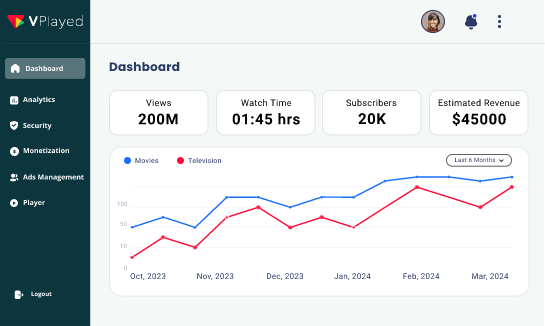Building a Live Streaming App: A Guide to Development & Cost in 2025
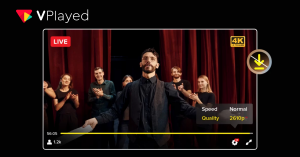
Are you up to date on 2025 live streaming facts? You see, building a live streaming app has seriously changed the ecosystem of businesses across industries.
But do you really get why building a live streaming app has been a good move for so many startups and brands? If you have ever thought of that, then you are in the right place.
In this blog, we won’t just throw information about live streaming; we will actually take you through a step by step guide to creating a live streaming app, tailored for your online video streaming business.
The Significance Of Live Streaming Apps
Are you looking for a solid platform for live gaming, interactive tutorials, or just sharing your personal experiences with a global audience?
If yes, then understanding how a live streaming app works is very important. Don’t worry, we have got the basics covered in the next immediate section of this article.
As we move forward, we will break down why building a live streaming app is a good move—from real-time engagement to reaching users worldwide, the possibilities are endless.
The article’s main objective? To make sure you are clear about live streaming apps without any confusion. So, with no further delay, let us get going.
- Fully Customizable
- Lifetime Ownership
- On-Premise/On-Cloud
- 100% White-label
- Zero Revenue Share
- Hire Developers
Table of Contents
What is a Live Streaming App?
A live streaming app is a digital platform that allows users to broadcast video content live over the internet and engage with their audience in real-time.
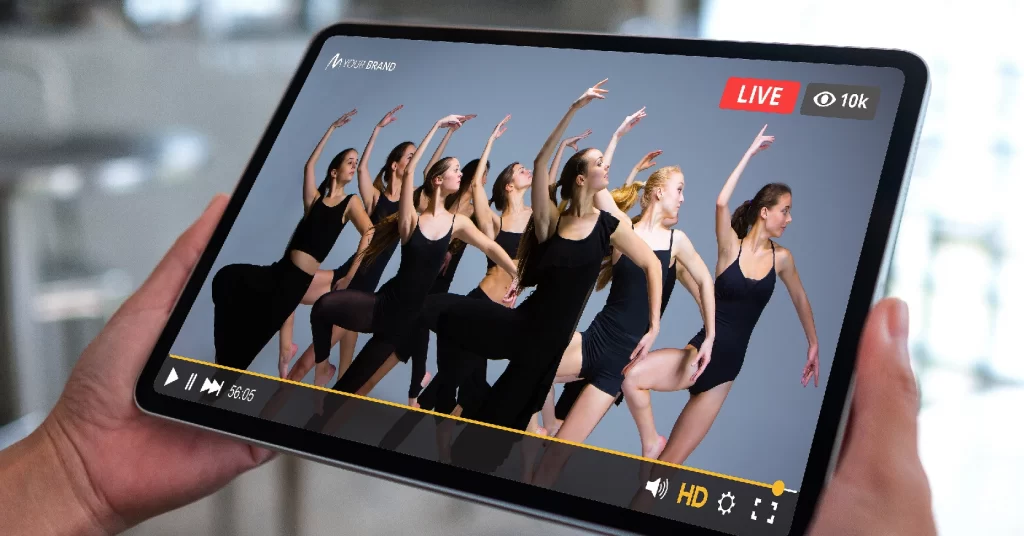
Unlike pre-recorded videos, live streaming is instant. These apps enable individuals and businesses to stream live events, engage with their users and create interactive experiences.
From influencer marketing and entertainment to business promotions, live streaming apps have changed the way we communicate digitally and across industries. Interestingly, this upswing in popularity can be squarely linked to the widespread accessibility of high-speed Internet.
Now that live streaming apps are part of the digital era, users can watch and share streamed content with ease, making them a must have for content creators and businesses.
How Does Live Streaming App Work?
A live streaming app works by sending audio and video over the internet in real-time.
Here’s the process:
- Capturing the Moment: Live streaming starts by capturing video and audio with an input device. Equipment can be a camera, microphone or camcorder.
- Encoding & Chunking: The raw footage is encoded and compressed with an encoder, which converts the content into a digital format for live streaming. The video is then chunked into smaller data packets for efficient transmission.
- Content Delivery & Distribution: The Content Delivery Network (CDN) is key to smooth video transmission. The chunked video is distributed across global CDN servers which optimizes speed and prevents buffering on users’ devices.
- Playback on End-User Devices: Finally the streamed content reaches the user in real-time, where they can watch, interact and engage with the content.
- Archiving & On-Demand Access: To extend the reach of live events, many live streaming apps allow users to store content as archived videos. With a Live to VOD platform, users revisit and watch the event on-demand even after the live stream ends.
Looking To Build Your Own Live Streaming Platform?
Start and Grow Your Video Streaming Service With 1000+ Features & 10+ Revenue Models.
 Highly Customizable
Highly Customizable Life Time Ownership
Life Time Ownership Own 100% of Your Revenue
Own 100% of Your Revenue
 Full-Branding Freedom
Full-Branding Freedom
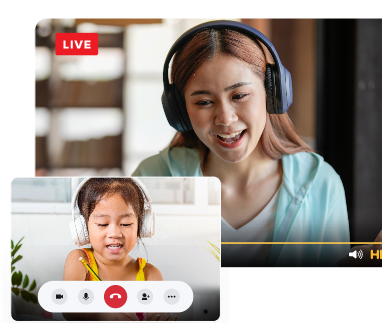
How Do You Create Your Own Live Streaming App?
Building a live streaming app requires a step by step approach to get video delivery, monetization and audience engagement right. Follow these steps to create a high performance streaming app.
- Identify Your Target Audience & Niche – Who is your app for—gamers, educators, influencers or businesses and what features do you need.
- Select a Monetization Strategy – Choose from ads, subscriptions, pay-per-view or in-app purchases to make money.
- Pick the Right Technology Stack & Hosting Platform – Get a CDN, cloud storage and adaptive bitrate streaming for smooth streaming.
- Design an Intuitive UI/UX – Create a simple and clean interface with seamless navigation, chat and minimal clutter.
- Develop and Test a Minimum Viable Product (MVP) – Build a basic version of your app with core live streaming features, test it and refine it based on feedback.
- Launch & Optimize – Launch your live streaming app, collect user feedback and continuously improve performance, video quality and engagement features
- Promote & Scale – Use SEO, social media marketing, influencer collaborations and app store optimization (ASO) to grow your user base.
Top Benefits Of Creating Live Streaming App:
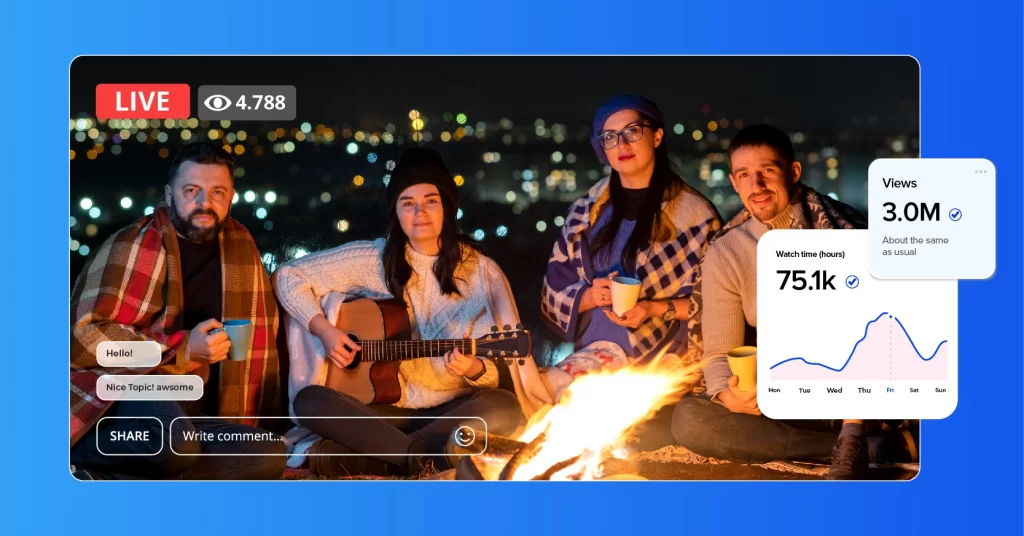
Creating a live streaming app offers numerous advantages, including increased brand visibility through real-time content sharing and organic social media reach.
Top Benefits Of Building Live Streaming App:
- Increased Visibility
- Stronger Community
- Analytical Insights
- Real-Time User Engagement
- Monetization Opportunities
- Brand Humanization
Understanding these benefits in detail reinforces the significance of developing a live streaming app, offering a strategic edge in the competitive digital landscape.
1. Increased Visibility
Building a live streaming app opens doors to wider audiences, significantly boosting your brand’s visibility and reach.
In fact, real-time content captures user’s attention and encourages organic sharing, allowing your message to spread like wildfire across social media platforms.
As more users engage with your live stream, your brand gains exposure, attracting potential customers and increasing brand awareness.
This heightened visibility can lead to a broader customer base and enhanced market presence, making it a strategic move to develop a live streaming app.
2. Stronger Community
Creating a live video streaming app instills a sense of community among your audience, thereby leading to meaningful interactions and connections.
By engaging in live chats and real-time Q&A sessions, viewers feel personally connected to your brand.
This further creates a loyal and dedicated community that shares common interests and values, strengthening brand loyalty.
Nevertheless, building a robust live streaming app with community functionality can lead to long-term user relationships, building brand advocacy, word-of-mouth marketing, etc.
3. Analytical Insights
Developing a live streaming app offers valuable analytical insights into audience behavior and preferences.
Through analytics, you can gauge viewership patterns, peak engagement times, and trending content topics.
This data-driven approach enables you to make changes to your live streams for maximum impact, optimizing content to go well with your target audience.
In fact, with precise analytics, you can make informed decisions to enhance your live streaming app development strategy, ensuring content relevancy and boosting overall performance.
4. Real-Time User Engagement
Perhaps one of the most significant advantages of building a live streaming app is the opportunity for real-time user engagement.
Live chats, comments, and reactions enable direct interactions with viewers, creating authentic and personalized connections.
This instant feedback loop allows you to address audience queries, concerns, and feedback on the right time, creating a sense of inclusivity and appreciation among viewers.
Above all, real-time user engagement builds trust and loyalty, encouraging viewers to join the live streams that are going to occur in the future, making live streaming app development a rewarding endeavor.
5. Monetization Opportunities
Creating a live streaming app opens up lucrative monetization avenues by offering premium and relevant online video content, collaborating with sponsors, and placing ads strategically.
Integrating subscription models, pay-per-view options, and virtual merchandise sales can further boost your live streaming app’s profitability.
In short, one can say that numerous monetization opportunities can help you recoup development costs and turn your live streaming app into a profitable venture, making it a wise choice to develop a live streaming app.
6. Brand Humanization
Last but not least, live streaming allows your brand to showcase its human side.
Through live broadcasts, your technical and marketing team can engage with the audience on a more personal level, giving a face to your brand.
Behind-the-scenes glimpses, live events, and interactive sessions create an emotional connection, humanizing your brand and making it relatable.
This human touch creates a sense of trust and authenticity, making your brand stand out in a competitive market.
On a closing note, we can confidently say that creating a live streaming app offers a number of benefits, from increased visibility and stronger community bonds to data-driven insights and real-time user engagement.
9 simple steps to create a Live Streaming App
To build a live streaming app holds a lot of revenue and engagement benefits, and here is how you do it, follow the below steps and make your exclusive live streaming application.
- Step-1: Create a Live Streaming Development Team
- Step-2: Choose the Live Streaming App provider
- Step-3: Choosing The Right Technology Stack and CDN
- Step-4: Designing The User Interface
- Step-5: Building The Core Functionality
- Step-6: Integrating Video Monetization Strategies
- Step-7: Testing And Quality Assurance
- Step-8: Launching Your Live Streaming App
- Step-9: Managing And Improving Your Live Streaming App
In this section, we will explore the step-by-step process of creating a live streaming app that engages users, stands out in the competitive landscape, and redefines digital engagement.
Step 1. Create a Live Streaming Development Team
Before starting on the journey of creating a live streaming app, understanding the basics of live streaming is pretty much important, and the first step is to form a live streaming app development team.
Your development team should hold all sets of experts right from front-end backend, UI/UX designers, marketers, graphic designers and business strategists.
Familiarize yourself with popular live streaming protocols like RTMP (Real-Time Messaging Protocol), HLS (HTTP Live Streaming), and WebRTC (Web Real-Time Communication) to explore various streaming architectures, server-side and client-side components for developing a successful live streaming app.
Step 2. Choose the Live Streaming App provider
Define your live streaming app feature preferences and research the top live streaming app providers in the market.
Understand the types of content that your target audience likes the most and discuss features, such as live chat, real-time analytics, security, HLS streaming and playback options with the app provider.
Create a detailed roadmap that includes all the crucial aspects like development timelines, resource allocation, and budget considerations.
For a well-performing smooth live streaming app delivering the expectations of your target audience.
Step 3. Choosing The Right Technology Stack and CDN
Video CDN is crucial as it enables smooth live streaming experience throughout and when it comes to technology stack, back-end frameworks like Node.js, Django, Ruby, etc.
Robust database solutions to handle real-time data and storage facilities with cloud services like AWS or GCP should be enabled to ensure smooth content delivery to your global audience.
Step 4. Designing The User Interface
Next on the list is the user interface (UI) . A visually appealing user interface encourages end users to spend more time on your live streaming app.
Focus on building a live streaming app with a highly responsive design and adaptive to various network devices, ensuring a consistent experience for all users across the globe.
Do a competitor analysis and try to incorporate user-friendly navigation, clear call-to-action buttons, and eye-catching visuals.
Step 5. Building The Core Functionality
The primary functionality of your live streaming app is to ensure smooth and reliable real-time streaming by optimizing video compression, encoding, and decoding processes.
Build a live streaming app with live chat functionality to facilitate on-the-go interactions between users and broadcasters, enabling direct engagement and audience participation.
Focus on optimizing video playback to provide high-quality HLS streaming across different operating systems.
Step 6. Integrating Video Monetization Strategies
Monetization with your live streaming app should integrate various revenue models to generate income and support ongoing live streaming app development.
Consider implementing subscription plans that offer premium content and exclusive features to subscribers alone.
Explore PPV options for one-time events. Incorporate in-app advertisements and sponsored content to attract brand partnerships and generate advertising revenue.
Most of the streaming apps make money through paid subscriptions and advertisements , but
Also, provide options for users to purchase virtual goods, merchandise, or digital gifts during live streams. All in all, diversify your monetization strategies as much as possible.
Step 7. Testing And Quality Assurance
Rigorous testing and quality assurance are imperative to ensure a bug-free and seamless live streaming to give a top-tier VOD solution & viewing experience for your users.
Conduct in depth testing across various devices, platforms, and network conditions to identify and rectify any technical issues that may arise.
Verify the data transmission, and overall app performance, to gauge the video on demand app’s resilience & scalability.
Incorporate user feedback into the testing process and make necessary improvements to ensure a positive user experience upon launch.
Incorporate user feedback into the testing process and make necessary improvements to ensure a positive user experience upon launch.
Step 8. Launching Your Live Streaming App
Preparing a striking launch strategy to garner initial traction and buzz around your live streaming industry and users.
Use eye-catchy descriptions, visuals, and relevant keywords to improve discoverability.
Bring in social media channels to generate excitement and awareness about your live streaming app’s launch.
If possible, collaborate with content creators and influencers in your niche to promote your app and attract an initial user base.
We can say that a successful launch sets the stage for continued growth and success in the live streaming market.
Step 9. Managing And Improving Your Live Streaming App
The work doesn’t end with the app’s launch; we might say that’s just the beginning.
Continuous management and improvement of your live streaming app is essential to stay ahead in the competitive landscape.
Regularly update your app to fix any bugs, add new features, and enhance user interactions.
Analyze user data to gain insights into user behavior and preferences, enabling you to make data-driven decisions for app enhancements.
Stay abreast of industry trends and adopt some of the best or innovative technologies to stay competitive in this dynamic live streaming landscape.
– All we can say is – Building a live streaming app requires careful planning, robust technology, and user-centric design.
Your live streaming app can become a powerful platform that will connect audiences worldwide and thrive in the ever expanding digital age.
How Much Does It Cost to Create a Live Streaming App?
The cost to build a live streaming app varies greatly depending on several factors, such as features, platform (iOS, Android or both), design and development team location.
- Basic live streaming apps with standard features can start from $15,000 to $30,000.
- More advanced platforms with features like real-time chat, interactive tools, adaptive bitrate streaming and multiple monetization models will cost more.
The cost also depends on the location of your team. Hiring developers in North America or Europe will cost you more, while outsourcing to countries like India will be more cost effective.
Conclusion:
By now, you should have your head around the massive opportunity of building a live streaming app. But hey, just knowing this isn’t enough; you gotta get the basics right and plan smartly if you want to launch a live streaming platform that hooks users.
It all starts with the tech stack—the foundation of a solid, scalable app. Mess this up and even the best ideas will fizzle out.
At the same time, the UI is key. A smooth, intuitive design isn’t just pretty; it keeps users in your app, makes their sessions longer and a whole lot more fun.
And of course, let’s not forget the money talk. Smart monetization strategies open up multiple revenue streams and can get you big brand partnerships. After all, what’s the point of building an app if it is not making you money?
- Request Demo Book a Live, Personalized Demo
- Contact Sales Reach Out to Our OTT Experts
Frequently Asked Questions(FAQ):
To create a live-streaming app, you’ll need to plan, design, develop, and test the app. This involves selecting the right tech stack, implementing live video streaming, integrating user authentication, and ensuring scalability and performance.
Developing a live-streaming app offers numerous benefits to platform owners and users. Firstly, it can boost user engagement, offer real-time interaction, and provide valuable content to viewers. Secondly, it can generate revenue through ads, subscriptions, and sponsorships, thus enhancing your brand visibility.
The cost of building a live-streaming app varies widely based on features, complexity, and development resources. But, building a basic live streaming app may cost around $20,000, while a feature-rich platform can go upwards of $100,000. To ensure the long-term sustainability of your streaming business, it’s essential to consider design, development, server costs, and ongoing maintenance.
Key features of a live streaming application include live video streaming, user profiles, chat, notifications, social sharing, monetization options, content discovery, and analytics.
Common technologies used to build a live streaming app include media servers (like WebRTC or RTMP), cloud services (such as AWS, Microsoft Azure), programming languages (such as Python, Node.js), and front-end frameworks (like React Native or Flutter) for cross-platform compatibility.
A live-streaming platform can monetize its content in a number of ways. The platform owner can use avenues like ads, in-app purchases, subscriptions, virtual gifts, merchandise sales, and pay-per-view events. The choice depends on your target audience and the value you offer through your app.
